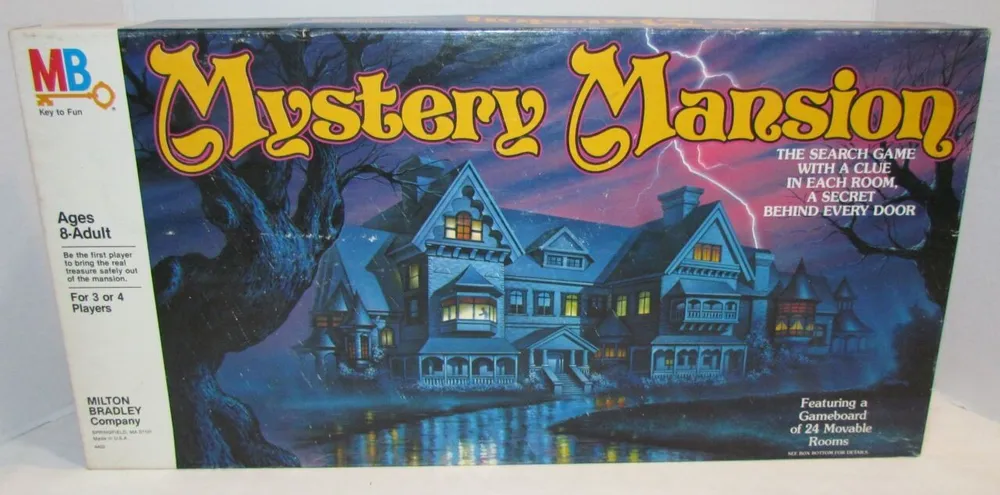Mystery Mansion (1984)
Mystery Mansion Board Game
Mystery Mansion is a series of board games that have been popular since their release in 1984 by the Milton Bradley Company. The game involves players searching furniture and other objects inside a mansion to locate a hidden treasure or stash of money. The original version of the game features a modular board, consisting of 24 cardboard tiles representing different rooms in the mansion, which players build as they progress through the game.
The game is popular and significant for several reasons: Mystery Mansion challenges players to build a Victorian mansion room by room while searching for hidden treasure. The game’s randomness adds to its charm and creates a frantic, hide-and-seek atmosphere. Mystery Mansion is suitable for players aged 8 and up, making it a fun and engaging option for families and groups of friends.
Gameplay Mechanics and Game Components of Mystery Mansion
The Game Components of Mystery Mansion include:
– Modular board consisting of 24 cardboard tiles
– 4 plastic pawns
– A card representing the mansion’s outside front door entranceTo set up the game, players start outside the mansion and take turns entering rooms, searching for hidden objects, and solving puzzles.
The game’s objective is to find the hidden treasure and escape the mansion with it. The player experience is often described as exciting and engaging, with a sense of exploration and teamwork.
Although the original Mystery Mansion is out of print, there is an electronic version available from the 1990s. Additionally, there is a more recent game called “Betrayal at Mystery Mansion,” which adapts the classic horror formula into a lighthearted, Scooby Doo-themed experience. This version was released in 2020 and can be found online or possibly at local game stores.
Game Components of Mystery Mansion
How To Setup Mystery Mansion
To set up Mystery Mansion, start by positioning the Foyer face up as the starting room. Shuffle the remaining room tiles face down and set them aside. Place the card representing the mansion’s outside front door entrance next to the Foyer. Each player places their pawn on the front door entrance card. Shuffle and deal five search cards to each player. Mix up the treasure chests and set them aside, ensuring one contains the real treasure. Finally, add cobwebs to six of the treasure chests to differentiate them.
Gameplay Mechanics and Game Objective
Player Experience
Mystery Mansion offers a highly interactive and variable experience. The procedural generation of the mansion ensures no two games are the same, adding a layer of excitement and exploration. Players must strategically use their search cards to inspect furniture, collect clues, and navigate the ever-expanding mansion. The suspense of finding the real treasure among several fake ones keeps players engaged and invested in the game.
Pros
Cons
Personal Thoughts on Mystery Mansion
Mystery Mansion is ideal for those who enjoy puzzle-solving, strategic planning, and a touch of mystery. It is suitable for families and casual gamers who appreciate a game with high replay value and a unique setup each time. However, it may not be the best fit for those seeking quick, simple games due to its complex setup and rules. Despite this, the game’s engaging mechanics and variable gameplay make it a rewarding experience for those willing to invest the time.
We are supported by our audience. When you purchase through links on our site, we may earn an affiliate commission, at no extra cost for you. Learn more.

